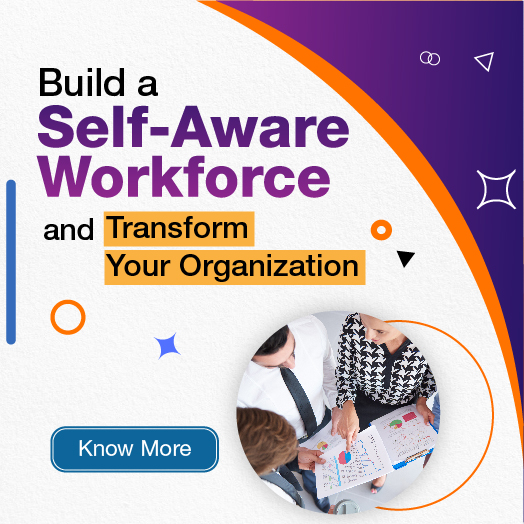
Personality Profiling: What It Is, Why It Matters, and How to Use It Effectively
- Our Subject Matter Experts
- June 27, 2025
What Is Personality Profiling?
To create a comprehensive personality profile, one evaluates personal behavior patterns and psychological tendencies by means of personality profiling. It emphasizes knowledge of personality features including introversion, extroversion, openness, conscientiousness, and emotional stability. Personality profiling’s primary goal is to help individuals understand how people perceive, behave, and interact with one another.
A personality profile is a tool that emphasizes consistent trends in personality traits over time rather than only a glimpse of someone’s present behavior. It can help one foresee responses, project compatibility, and customize one’s approach to communication. Personality profiling provides a basis for strengthening team performance and interpersonal relationships.
Modern personality profiling compiles a complete personality profile by means of several frameworks and tests. In fields including education, career planning, and particularly in knowledge of team dynamics in professional environments, these profiles are indispensable.
Why Personality Profiling Matters in Today’s World
Personality profiling is now quite relevant in our fast- changing environment. Effective collaboration depends on an awareness of many personality traits since more people work remotely and in multicultural teams. Personality profiling helps us to negotiate these complexities using empathy and a calculated approach.
Knowing someone’s personality profile helps companies and colleagues modify their communication, lower conflict, and increase teamwork. Personality profiling also enhances customer service in the business by guiding staff members toward client preferences.
From staff engagement to leadership development, the application of personality profiles guarantees a better fit between individuals and organizational roles. Productivity, morale, and retention rates, therefore show a clear increase.
Moreover, in education, healthcare, and even marketing, personality profiling is quite important. While healthcare professionals use personality profiles to enhance patient care, teachers can modify their lessons depending on the personality traits of their students.
Common Tools Used in Personality Profiling
Many scientifically validated instruments are applied to produce an accurate personality profile. These instruments enable the construction of helpful personality profiles and the evaluation of personality qualities.
- Myers-Briggs Type Indicator (MBTI): Sorts people into 16 personality types based on preferences for introversion against extroversion and thinking against feeling.
- Big Five Personality Traits (OCEAN): Measures five broad personality traits—Openness, Conscientiousness, Extraversion, Agreeableness, and Neuroticism—Openness, Conscientiousness, Extraversion, and Agreeableness.
- DISC Assessment: Focuses on four behavior types—dominance, influence, steadiness, and compliance—on DISC assessment. It’s quite popular in business environments for personality profiling.
- Enneagram: Maps out nine basic personality types and their interactions, exposing motivations and stress behaviors.
- StrengthsFinder: Helps people create a personality profile based on their strengths, which fall into themes.
From personal development to corporate output, these instruments enable in-depth personality profiling, enhancing understanding in various spheres, including environmental contexts.
Read More – Best DiSC Personality Test With DiSC Workplace Assessment
Benefits of Personality Profiling
Personality profiling has advantages in almost every sphere of life. Whether applied personally or in groups, the knowledge from a personality profile can propel significant transformations.
- Enhanced Communication: Improved communication results from better, more sympathetic interactions between people with different personality traits.
- Better Team Composition: Teams developed by means of personality profiling often feature complementary personality traits, enhancing performance.
- Leadership Insight: Leaders apply personality profiles to customize their approach to each team member.
- Conflict Management: Understanding personal qualities helps to defuse conflict and foster mutual respect.
- Employee Development: Employee development is guided by a thorough personality profile that also directs personal development plans.
- Retention and Satisfaction: Employees whose personality fits their roles are more content and less prone to leave.
- Strategic Role Assignment: The application of personality profiles ensures people are placed in roles that suit them.
- Improved Hiring Decisions: Employing personality profiles in hiring helps to lower turnover and increase compatibility.
- Increased Productivity: People naturally become more efficient when they live in line with their personalities.
Personality profiling produces overall more alignment, involvement, and long-term success.
How to Use Personality Profiling in the Workplace
The modern workplace can be changed by personality profiling. From team dynamics to hiring, the knowledge of personality traits and personality profiles changes everything.
Personality Profiles in Hiring
Recruitment is among the most powerful applications for personality profiling. Personality Profiles in Hiring let HR departments match applicants depending on fit with team culture and job requirements, rather than only on competencies.
Organizations lower hiring risks, improve candidate screening, and raise employee satisfaction by applying Personality Profiles in Hiring. A structured personality profile enables one to ascertain whether the personality features of a candidate fit the demands of a job.
Personality profiles in hiring also lower unconscious bias and support objective decision-making. Those who fit their job description are more likely to be successful, stay longer, and make more contributions.
Team Formation and Collaboration
Different personality traits in the workplaces help to shape team structures guided by personality profiling. When forming a team, leaders can use the application of personality profiles to ensure a balanced mix of thinkers, doers, leaders, and supporters.
Understanding the personality profile of every team member helps to assign roles and implement communication plans. This enhances team performance and harmony.
Leadership and Development
Those who apply personality profiling will be able to help their team grow. Knowing employees’ personality qualities helps with strategic delegation, tailored mentoring, and individualized feedback.
Understanding the personality profile of their team helps managers to more successfully handle problems and lead with more empathy.
Conflict Resolution
Many times, conflict results from personality differences. A direct communicator could run across a more reserved team player. By means of personality profiling, leaders can pinpoint the underlying causes of these conflicts and gently resolve them.
The application of personality profiles helps one to see conflicts as chances for development and improved knowledge.
Motivation and Engagement
Understanding what motivates every team member helps one to inspire the others. Personality profiling tells whether someone values cooperation, autonomy, or recognition.
Engagement increases when management matches incentives and tasks to personal characteristics. Workers see, know, and appreciate you.
Real-Life Applications and Case Studies
Tech Company: Using DISC tests to enhance team dynamics, a software company applied Personality Profiles in Hiring. They claimed better job satisfaction across departments and a 25% rise in employee retention.
Healthcare Organization: Nurses participated in personality development programs meant to improve cooperation in healthcare. Restructured shift assignments based on personality profile results helped to lower conflicts and enhance patient outcomes.
Education Sector: The sector of education included teachers modifying their approaches by means of personality profiling. Different personality types of students got more individualized instruction, which helped their academic performance.
Marketing Agency: The application of personality profiles helped realign job responsibilities. While analytical staff handled performance measures, creative thinkers were moved into content roles. Productivity surged by 30%.
Read More – What is a Disc Assessment, DISC Personality Types and Benefits
Conclusion
In the fast-paced environment of today, personality profiling is a necessary instrument. Understanding personality traits and building a clear personality profile helps people and companies to realize their best possibilities.
From team building to leadership, from personal development to recruiting the appropriate people, the strategic use of personality profiling produces a significant impact. Personality profiles applied in the workplace help to match talent with tasks, lower conflict, and increase involvement.
Personality profiling used sensibly results in improved communication, closer relationships, and a better workplace. Tools like personality profiling will be essential for companies to adapt, grow, and survive as they confront fresh obstacles.
Whether you are assembling a team, assessing a candidate, or making investments in your own development, a well-written personality profile is your key to wiser choices and more satisfying results.






